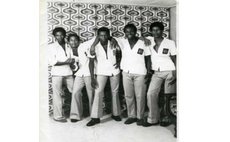The game of Lacrosse
The Game of Lacrosse was born of the North American Indian, christened by the French, and adapted and raised by the Canadians. Lacrosse is a combination of basketball, soccer and hockey. The game requires and rewards coordination, agility, quickness and speed. This exhilarating sport is fast-paced and full of action with long sprints up and down the field, abrupt starts and stops, precision passes and dodges. Lacrosse is played with a stick, which must be mastered by the player to throw, catch, scoop the ball and score in the goal.
Lacrosse is one of the fastest growing team sports in the United States. Youth participation in the sport has grown over 138% since 2001 to nearly 300,000. No sport has grown faster at the high school level over the last 10 years in the U.S as there are now an estimated 228,000 high school players. Lacrosse is also the fastest-growing sport over the last six years at the collegian level with 690 college teams in 2012. There are more than 500 college club programs, including nearly 200 women's teams that compete at the U.S Lacrosse Intercollegiate level.
Lacrosse's history spans centuries and is the oldest sport in North America. Rooted in Native American (Indian) religion, it was often played to resolve conflicts, heal the sick, and develop strong, virile men and as a preparation for war. Native Americans still refer to lacrosse today as "The Creator's Game." Lacrosse was a diplomatic tool which allowed tribes to resolve territorial disputes, settle arguments and as a mechanism for socialization. Games were played on seasonal agrarian festivals or on occasions of celestial happenings. Indian legend tells of as many as 1,000 players per side played a game from the same or different tribes.
How did European colonists become interested in the game of lacrosse? In 1763, during the Seven Years' War between Britain and France, two Indian tribes in Michigan played a game to honor the birthday of King George III. The British soldiers who witnessed the contest were fascinated by the rough play and the speedy back-and-forth engagement. They were impressed with the concept of the Native American Indian warrior as the "noble savage". The warrior's image of antiquity, bravery, endurance, and purity in nature.
According to Dr. Aveni, Professor of Anthropology and Native American Studies at Colgate University, the evolution of the Native American game into modern lacrosse began in 1867 when Canadian dentist, Dr. W. George Beers standardized the game with the adoption of set field dimensions, limited to the number of players per team and incorporated other basic rules. Lacrosse gained popularity among the "gentleman's elite class" in Canada in the mid-nineteenth century and the game was quickly exported across the border into the U.S. Lacrosse found its way into the upper echelon of American universities and became a staple among varsity sports at predominantly East Coast Ivy League schools, both at the high school preparatory and at the college level. New York University fielded the U.S' first college team in 1877, and Philips Academy, Andover (Massachusetts), Philips Exeter Academy (New Hampshire) and the Lawrenceville School (New Jersey) were the U.S' first high school teams in 1882.
Because of this history of lacrosse elitism going back over a century, the game is often rightfully viewed as the sport of the 'upper class' and the privileged. Mostly for suburban well-heeled families who are able to send their children to expensive, selective private schools. Even to this day, lacrosse players are predominant graduates of these exclusive Ivy League schools. In 2011, The Wall Street Journal a newspaper catering to the wealthy, carried an article which reinforced the stereotype that lacrosse players are children of the rich, powerful and famous. While this stereotype is true, it is becoming less true each year as more kids from less affluent backgrounds are playing the game.
In fact in 2012 the state of Maryland enacted 'The Lacrosse Opportunities Program'. The law's purpose is to increase opportunities for minority (non-white) students from lower socio-economic backgrounds to participate in lacrosse in their communities. Only schools whose student populations are at least 80% "minority" can receive grants under the program to create lacrosse programs. Lacrosse has a long, proud and rich tradition in Maryland. The two college dominant teams in Maryland and nationwide are the U.S Naval Academy in its capital of Annapolis and their cross state rivals, the University of Maryland at College Park just outside of Washington DC.
The government of Dominica can introduce lacrosse in our high schools by partnering with colleges in the U.S. where the game is played. Coaches from the college ranks can travel to the island to introduce the game during their off season by setting up sponsored training camps for students. Another suggestion is the government can recruit Peace Corp Volunteers who have played the game and assigned them to the high schools as teachers and lacrosse coaches. This is an effective way for our students to play the game and hopefully develop school teams and compete against each other. This may be an excellent way to get lucrative scholarships to some of Americans most prestigious colleges with lacrosse programs.




